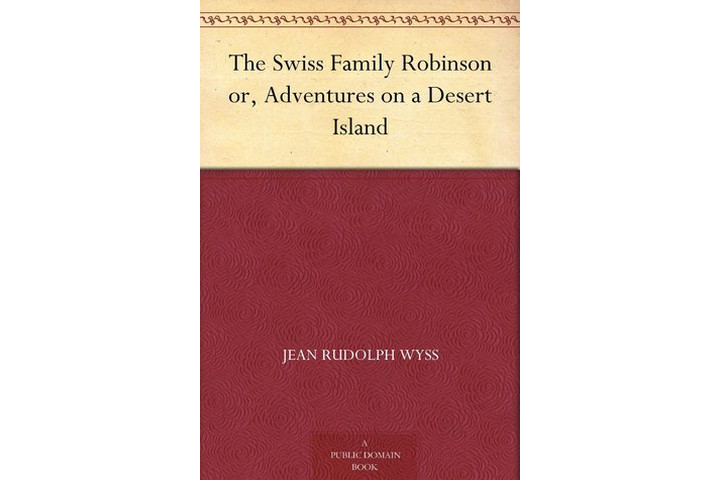With Amazon’s Kindle, you can tote around a book for your every mood and location, all day every day, without putting a load on your back or shoulder. Engage in a little light reading for the checkout counter, a more serious and engrossing work for the airport lounge, catch-up reading for your school assignments on the train, or something to occupy you at the cafe. The fact that you can carry multiple books conveniently in a lightweight tablet gives you an excuse to put away your smartphone, at least for a while.
Amazon’s Kindle, the most popular e-book reader in existence, has been around since 2007, and that means kids have grown up with them. Even though Amazon has made a slew of more general-use tablets over the years — most recently, the Amazon Fire HD 10 Kids Edition and Amazon Fire HD 10 — the Kindle deservedly remains the company’s flagship.
Further reading
- Best sites for downloading free audiobooks
- Best e-book readers
- How to read EPUB books on your Kindle
Thankfully, for Kindle owners, there are thousands of titles currently available via Amazon, Google Play, and an array of other online sources. To help you sort through it all, we’ve rounded up some of the better free offerings, including public domain works and self-published titles. Never before has it been so easy to become a master of literature without trekking to your local library.
A note before you begin
Google Play does not offer books using Kindle’s proprietary format in the way Amazon and Project Gutenberg do. Instead of AZW and KF8 files, users can directly download Google Play books as PDF files, thus rendering the books compatible with Kindle. To do so, navigate to your Google Play book library, click the two dots at the lower-right corner of any title, and select Download PDF from the resulting drop-down menu. Then, select your desired save location, and drag and drop the resulting file from your computer to your device once you finish downloading.
For other formats, check out our guide to reading EPUB e-books on Kindle.
Jump straight to a category
- Books for kids
- Science fiction and fantasy
- Historical and historical fiction
- Mystery, thriller, and suspense
- Action and adventure
- Horror
- Politically-charged
- Romance
- Philosophy and science
- Humor
- Poetry
Books for kids
The Mystery of Smugglers Cove by Paul Moxham

Paul Moxham’s The Mystery of Smugglers Cove is an interesting middle-grade-level mystery for kids who love suspenseful, adventurous stories. Set in 1950’s Britain, it offers a page-turning thrill ride featuring a bunch of kids getting caught up in unexpected adventures. Fans of the Nancy Drew and The Famous Five series particularly enjoy this book as it covers a similar detective-action theme. The best part? At just 165 pages, it’s a quick read so kids can enjoy the story without getting bored.
Amazon
Peter and Wendy by J.M. Barrie
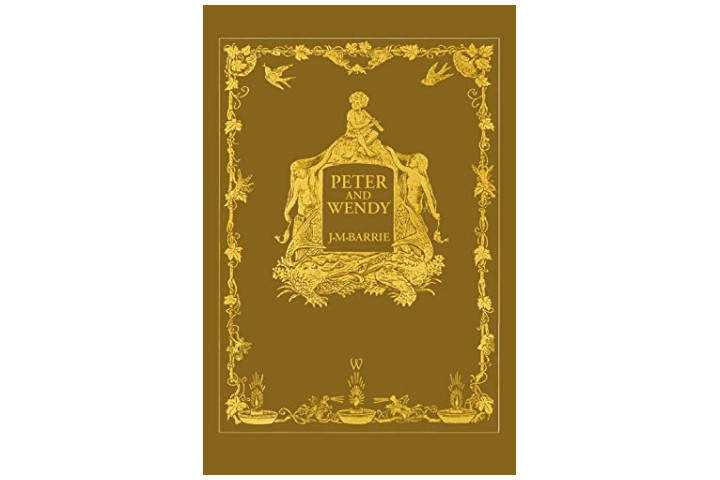
Inspired by Barrie’s friendship with the Llewelyn Davies family, Peter and Wendy is essentially the classic tale of Peter Pan, a boy who can fly and whisks a group of young children away to Neverland. All the usual suspects make their debut (Tiger Lily, Tinker Bell, the Lost Boys, Captain Hook, etc.).
The Wonderful Wizard of Oz by L. Frank Baum

There are very few people who are oblivious to Dorothy’s cyclone-fueled romps in Oz with Wicked Witch of the West, yet revisiting the Kansas native’s harrowing quest for the Emerald City is always somehow reassuring. The Tin Woodman, the Cowardly Lion, and the Scarecrow all add to Baum’s descriptive and vivid world. Victor Fleming’s music doesn’t quite do the novel the justice it deserves.
The Secret Garden by Frances Hodgson Burnett
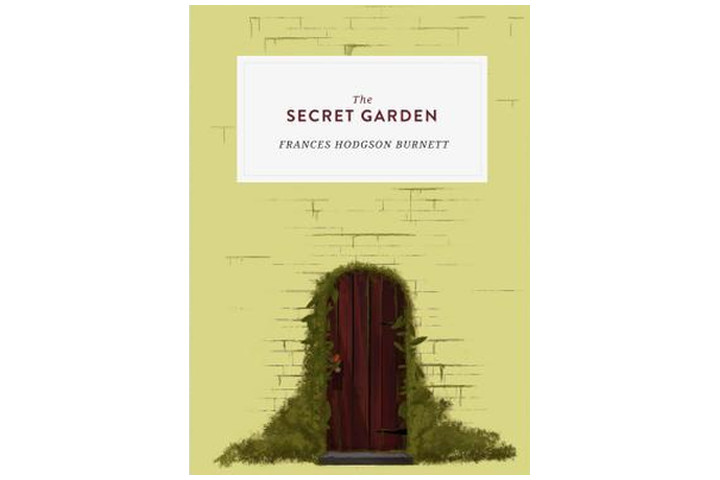
A touchstone in the realm of children’s literature, Burnett’s classic has been adapted time and time again for both the stage and the big screen. It revolves around heroine Mary Lenno, an orphan who’s shipped off from her colonial India to live on a dingy county estate in Yorkshire. There she learns the healing power of friendship through plant cultivation in her secret garden. So heartwarming, yet insightful.
Grimm’s Fairy Tales by Jacob and Wilhelm Grimm

The Brothers Grimm wrote fairy tales that were aptly, rather grim, but many of the beloved tales have undergone edits and numerous alterations to the point where they’ve become suitable for children rather than the darker stories they once were. You know the tales — Rapunzel, Cinderella, Hansel, and Gretel — but there are also plenty of great standouts that weren’t made into animated films.
Little Lord Fauntleroy by Frances Hodgson Burnett

Taking place in grubby Victorian New York, Little Lord Fauntleroy is a rags-to-riches story about a young boy named Cedric, who unexpectedly becomes royalty. While Cedric is whisked away to England by his grandfather to learn the ins and outs of the aristocracy, he ultimately manages to teach his grandfather to become a more compassionate leader.
Rikki-Tikki-Tavi by Rudyard Kipling

It should go without saying, kids love animals. Kipling’s tale, culled as a stand-alone story from The Jungle Book, follows a valiant mongoose who works to defend his adopted family of British colonials from a menacing pair of cobras upon their arrival in India. Sure, you may need to explain some of the subtle Victorianisms to younger audiences, but the harrowing story exhibits some of the most vibrant and sharp personifications of any novel in existence.
Amazon
The Wind in the Willows by Kenneth Grahame

As one of my favorite childhood books, it makes me all warm and fuzzy inside knowing Grahame’s classic is readily available free of charge. It’s about four anthropomorphized animals — Toad, Mole, Rat, and Badger — and their various escapades in the English countryside. It’s chock-full of adventure, companionship, and moral reasoning, written by the former secretary of the Bank of England as bedtime stories for his son Alistair.
A Grateful Heart – A Colorful Rhyming Book Teaching Kids About Gratitude by Solape Adebajo and Wuraola Fagbamiye

A Grateful Heart is a gorgeous illustrated book created with younger kids in mind. It includes a short set of rhyming words on gratitude to encourage children to learn about gratefulness. It is quite interactive, including a word puzzle on gratitude for kids who prefer hands-on learning, nine ways of saying thank you for kids who are learning how to communicate, and numerous cute illustrations for visual learners.
Amazon
Science fiction & fantasy
The Time Machine by H.G. Wells
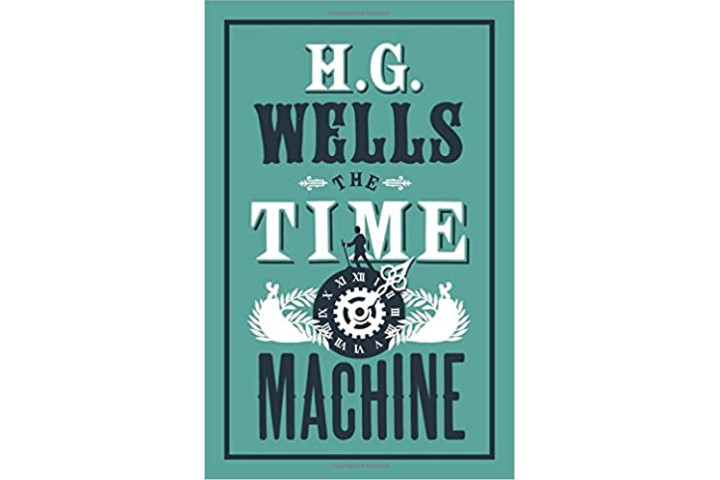
First published in 1895, The Time Machine is considered one of the earliest science fiction novels, and the first of the time travel subgenre. The Time Traveller (a nameless Victorian scientist) is sent back to the year 802,701 by his steampunk-esque time machine. He finds a world peopled by the fairylike Eloi and the subterranean Morlocks, who prey on the Eloi. If you enjoy the book, check out the 1960 movie — we’d give the 2002 remake with Guy Pearce and singer Samantha Mumba a wide berth.
City of Endless Night by M. M. (Milo Milton) Hastings

This prescient dystopian novel, written by an American at the end of World War I and published in 1919, depicts the city of Berlin more than a century later when millions of people live underground as the city wages war with the rest of the world. Life is not pleasant. Food is strictly rationed for workers, religion is banned, and the population is tightly controlled via eugenics. What’s the natural response to all this misery? Revolution, of course, in the form of a young American chemist who infiltrates this closed society. Much of the plot predicts elements of Germany’s resurgence, the rise of fascism, Nazi ideology, and the concept of a master race, and is seen as a precursor of Fritz Lang’s Metropolis, Aldous Huxley’s Brave New World, and other classics of the genre.
The Legend of King Arthur and His Knights by Sir James Knowles

The true origins and subsequent merits of the late King Arthur are controversial, to say the least. Knowles’ version of the legendary British leader is considered one of the most revered, though, grounded in knights, damsels, and a sword most peculiarly wedged into a stone. The older language can be cumbersome, the repetitiveness a bit drab, yet the source material remains a poignant take on Middle Ages. Camelot doesn’t do it justice.
Twenty Thousand Leagues Under the Sea by Jules Verne

It was a toss-up between Twenty Thousand and Journey to the Center of the Earth, with the latter possibly losing due to the terrible film with Brendan Fraser back in ’08. However, Verne is renowned for his work in the sci-fi field, in both prose and creativity, and Captain Nemo’s trek through the Antarctic ice shelves, the Red Sea, and other fictional and real-world locations is extremely engrossing. This is one of those classic books everyone should read.
The Scarlet Plague by Jack London
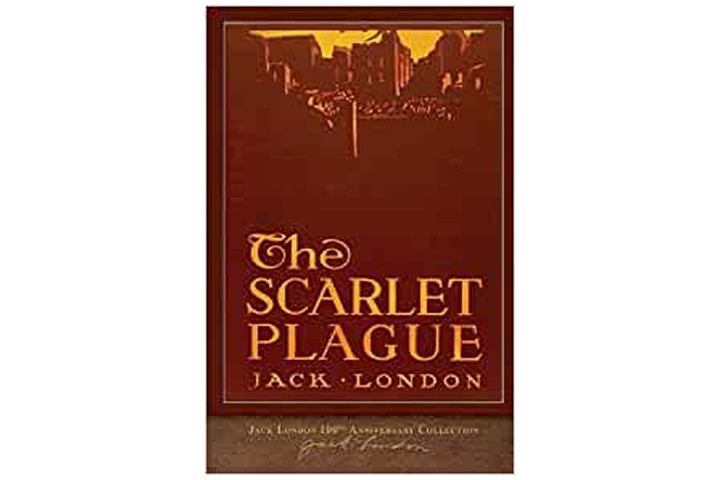
London’s White Fang and The Call of the Wild
Flatland by Edwin A. Abbott

If you’re looking for a philosophical novel that dabbles in math and exists in a two-dimensional fantasy realm where all inhabitants are geometric shapes, then Flatland is surely for you. It’s a satirical look on society and class distinctions in Victorian England, with one inhabitant trying to grapple with the concept of third and fourth dimensions, but it’s still laid out in a manner that is easy to grasp no matter your knowledge of the field.
The Cosmic Computer by H. Beam Piper

Piper may have committed suicide in 1964 — often attributed to financial woes and marital problems — but not before he wrote a series of stellar short stories and several novels in the sci-fi vein. Cosmic Computer, one of his last, is about a struggling, poverty-stricken post-war society that believes its survival depends on finding a computer known as MERLIN. The problem is, returning colonist Conn Maxwell knows otherwise. Troublesome.
The Crystal Crypt by Philip K. Dick

Thirty-one pages don’t make a marathon of a book, but Dick’s novels have inspired everything from Blade Runner to The Adjustment Bureau. In the novel, Mars and Earth hang on the verge of war. The last ship bound for Earth is stopped by Martian soldiers searching for three saboteurs who supposedly destroyed a Martian city. The three aren’t found, but it doesn’t mean those harboring the secrets of the Martian city’s demise aren’t on board.
The Lost World by Arthur Conan Doyle

It’s impossible to ignore the similarities between Doyle’s work and Spielberg’s. However, the Victorian-era The Lost World offers a greater scientific basis than the blockbuster film created nearly a century later, even if it does see a young journalist and a small team scouring a remote Amazonian plateau in search of dinosaurs and other prehistoric beings. Doyle’s prose is dry and somewhat stale, whether he’s describing a band of ape-like humanoids or rehashing the genius exploits of Professor Challenger, but his tone is anything but.
Historical and historical fiction
The Journals of Lewis and Clark, 1804-1806 by Meriwether Lewis and William Clark

Living in Portland, you can’t turn a city corner without being reminded of Lewis and Clark’s fabled journey across the Northwest. They traversed a nation with the aid of Shoshone guide Sacajawea in the early 1800s, chronicling all the flora, fauna, tribal encounters, and vast landscapes they encountered along their journey. The language can be difficult to decipher at times, but it’s a richly detailed account of our nation’s early natural history and exploration. There are plenty of other great history books if you’re looking for more options, though.
Autobiography of Benjamin Franklin by Benjamin Franklin

Benjamin Franklin was always renowned for his eccentric and intriguing personality, whether he was dabbling in electricity, drinking beer, or serving as Postmaster General of the United States. Needless to say, he remains a hallmark of American history more than 200 years after his death. His autobiography offers personal stories, exploits, and general insights into his life in the days before the American Revolution, making it an excellent non-fiction book worth reading.
Theodore Roosevelt, An Autobiography by Theodore Roosevelt
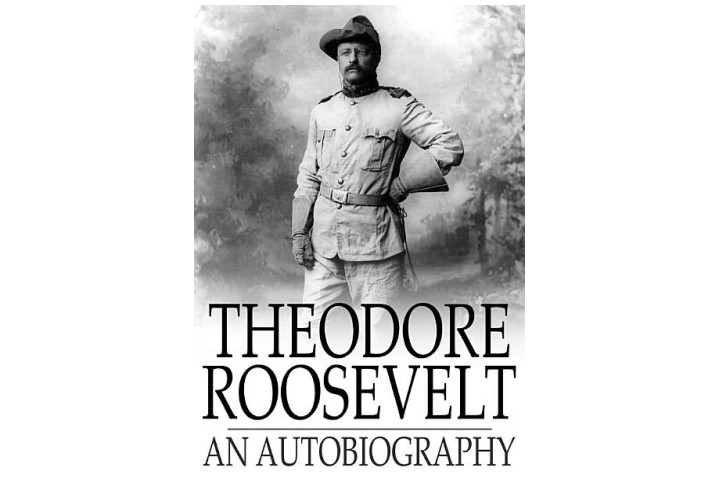
There are few people involved today that boast a background as sprawling and diverse as good ol’ Teddy Roosevelt. He was the leader of the Republican Party and the short-lived Bull Moose Party of 1912, as well as an acclaimed naturalist, cowboy, hunter, author, and soldier in the Spanish-American War. The man is considered an American legend for both his exploits in office and outside of it — and his autobiography tells it all. We’ve found more of the best biographies if you’re looking for something similar.
Amazon
The Life of Buffalo Bill: An Autobiography by William Frederick Cody

Buffalo Bill is one of the most iconic and colorful characters epitomizing the American Old West. Although he was a plainsman, buffalo hunter, and scout (who had his Medal of Honor revoked and reinstated years later), his claim to fame was his Wild West show. His deeds were many, his prejudices few, and his autobiography follows his story from the time of his birth in 1846 until he was 44 years old. It’s not all of his life’s work, but it’s the foundation.
Two Years Before the Mast by Richard Henry Dana Jr.

After being stricken by measles and subsequent vision damage while attending Harvard, Dana enlisted as a sailor on a two-year voyage around Cape Horn on the brig Pilgrim. He kept a diary of his travels along the way, known as Two Years Before the Mast, and filled it with passages of practical naval jargon, animated imagery, and some of the first descriptions of 1830s California. However, it’s more so a historical tale than one of adventure.
Night and Day by Virginia Woolf

One of Virginia Woolf’s earlier works, Night and Day explores the lives of two women in Edwardian London. Night and Day is a nuanced exploration of the political and personal lives of women in the early 20th century. While some of Woolf’s later novels can be a challenge, Night and Day is an excellent read.
Life on the Mississippi by Mark Twain
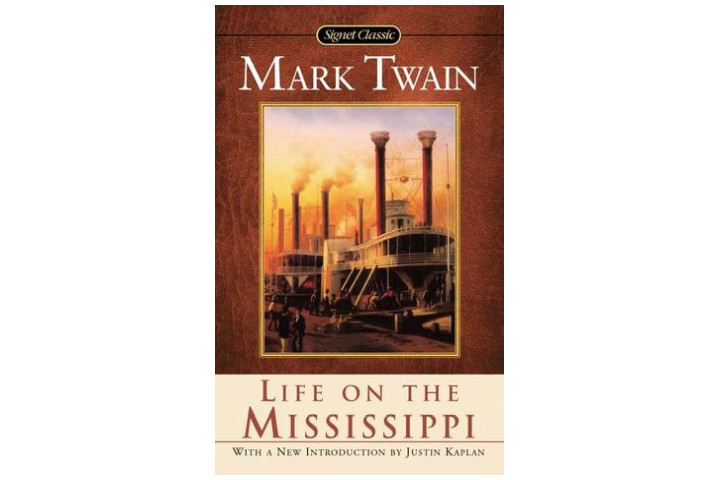
The Mississippi River had a profound and pivotal on Twain from the time he was a little boy until his death in 1910. Life on the Mississippi is a memoir, a steamboat-era novel that summarizes the river’s discovery by Hernando de Soto in 1541, Twain’s time as a steamboat pilot, and his eye-opening return to the river many years after industry and greed had befallen upon the surrounding banks. It revels in Twain’s knack for observation while providing a backdrop for the author’s classic tales.
South: The Story of Shackleton’s Expedition by Sir Ernest Henry Shackleton
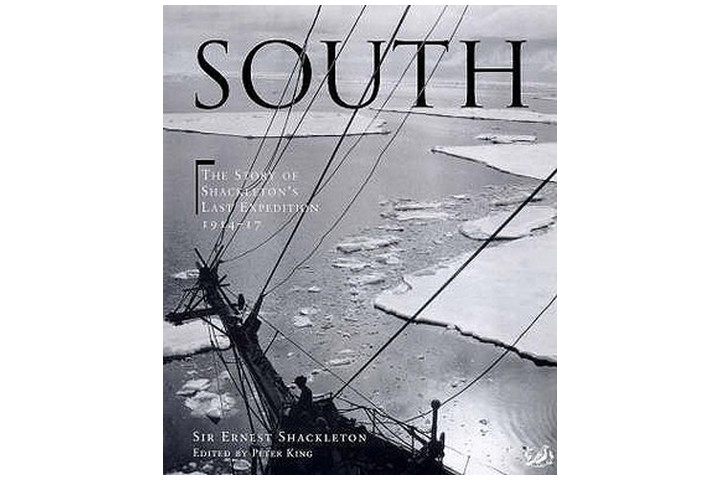
It seems like almost all stories coming out of Antarctica either deal with penguins, polar bears, or survival. Being a first-hand account of 28 men marooned on polar ice following a nearly fatal shipwreck in unforgiving waters, Shackleton’s tale represents the third option. It recaps the journey, from Shackleton’s burning desires to traverse Antarctica to the subsequent catastrophe and ensuing struggle to survive, albeit with descriptive prowess and sea-log flare.
Mystery, thriller, and suspense
The Red House Mystery by A.A. Milne
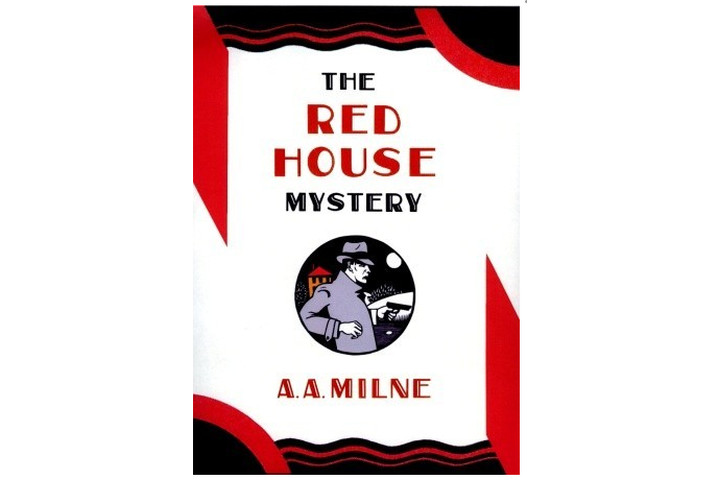
You may not have expected the author of Winnie the Pooh to write a crime novel, but he did, and it’s a good one — although this is the only one he ever wrote. This is an excellent locked-room mystery set at a country house. During a dinner party one of the guests, the black sheep of the family, is found murdered by a shot to the head. Comedic at times, rational and by-the-book at others, Milne follows the chief inspector and his sidekick as they interrogate guests to solve the crime.
The Private Memoirs and Confessions of a Justified Sinner by James Hogg
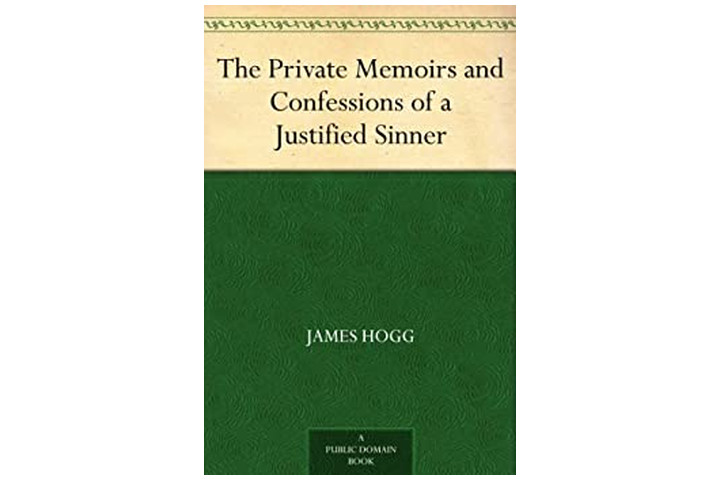
Published anonymously in 1824, nothing can prepare you for this deliciously clever gothic mystery book about the rivalry between two brothers in 17th-century Edinburgh and a powerful stranger known as Gil-Martin who stirs it all up. It’s a work of metafiction that delves into the psyche of religious fanaticism and presents a series of supposedly discovered documents, challenging you to unravel the enigma and make sense of what happened.
Amazon
Heart of Darkness by Joseph Conrad
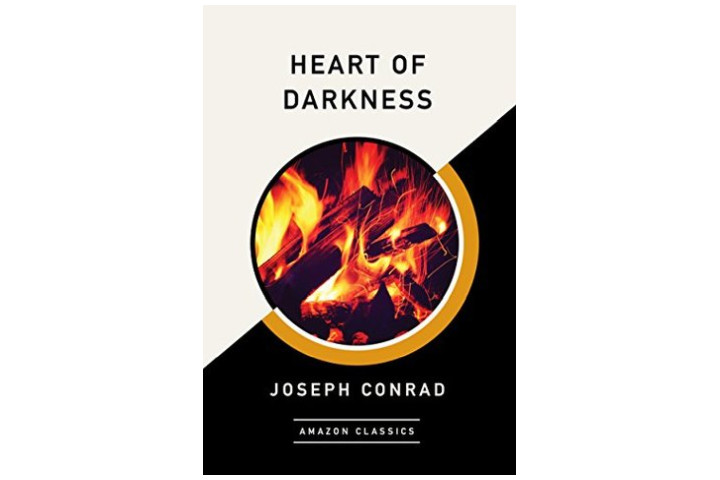
An increasingly nightmarish journey on a steamboat in the Congo turns into a disturbing journey into the human psyche. This novella served as the inspiration for the thriller movie Apocalypse Now, which shifted the action to Vietnam and Cambodia during the Vietnam War, instead of 19th-century Africa. It’s a haunting tale, as a steamboat captain, Marlow, struggles up the river to find the insane Kurtz. Later criticized as a xenophobic dehumanization of Africans, it reflects colonial attitudes.
The Adventures of Sherlock Holmes by Sir Arthur Conan Doyle

Doyle did not invent the fictional detective archetype — that arguably goes to Edgar Allen Poe — but he certainly helped bring it to the mainstream with this classic mystery book. The Adventures of Sherlock Holmes encapsulates 12 original tales featuring Holmes first published in The Strand Magazine, including classics like A Scandal in Bohemia and The Adventure of the Red-Headed League. Holmes’ astute reasoning and knack for forensics are fleshed out in easily digestible snippets only Doyle could write.
The Thirty-Nine Steps by John Buchan

As the first of five novels featuring the beloved action-hero Richard Hannay, Buchan’s Thirty-Nine Steps has long been heralded for creating the man-on-the-run character we often see in literature and blockbuster films. It follows a retired mining engineer who becomes wrapped up in an international plot upon discovering a body in his home and fleeing for his native Scotland. It offers a short read, with a tense introduction into the world of espionage novels.
The Woman in White by Wilkie Collins

Collin’s classic is a must if you’re looking for a tale of mistaken identity encased in a shroud of mystery. It’s considered among the first mystery novels ever written, incorporating elements of Gothic horror and psychological realism, and narrated by multiple characters. The book opens with teacher Walter Hartright encountering a mysterious woman in white upon a London road, but it unravels into a sensational love affair with subtle undercurrents of political commentary.
The Secret Adversary by Agatha Christie

Having written more than 80 detective novels during her lifetime, it’s safe to say Agatha Christie is considered a household name when it comes to the genre. Her second novel, The Secret Adversary, introduces the reader to Tommy and Tuppence, two characters who reoccur in other Christie tales down the line. Their goal? To find a woman who vanishes with government documents — and without becoming completely entrenched in a tangle of secret intelligence, false evidence, and dubious affairs.
The Murders in the Rue Morgue by Edgar Allen Poe

Considered the first detective story ever written, the short tale is centered on a man named C. Auguste Dupin and his work to unravel the mystery surrounding a baffling double murder on a fictional street in Paris. Although numerous witnesses heard the suspect, no one can seem to agree on the language spoken, and the only other piece of apparent evidence is a lone strand of hair Dupin believes to be nonhuman. It’s captivating despite its age and serves as a prototype for numerous fictional detectives.
Murder on the Mind by L.L. Bartlett
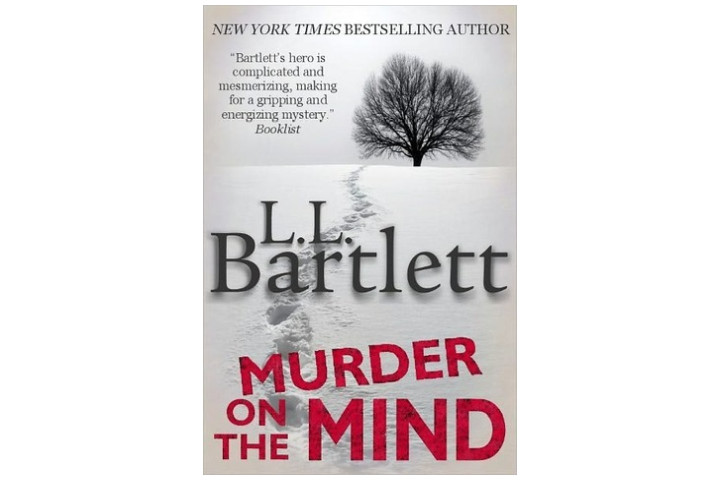
It’s not surprising Murder on the Mind is a fitting title given the book’s main protagonist, Jeff Resnick, gains the ability to see murders happen through a series of psychic visions after sustaining a traumatic brain injury during a mugging. He, along with his brother, sets forth to investigate the crimes and unravel the mysterious circumstances surrounding the death of his brother’s banker and another unsuspecting victim. It’s stark and well-paced, with twists to match.
Crime and Punishment by Fyodor Dostoyevsky

Dostoyevsky’s second novel following his return from exile in Siberia proposes more moral quandaries than any mystery or suspense novel on our roundup. It revolves around a penniless man named Rodion Raskolnikov who executes a plot to kill a corrupt pawnbroker to alleviate his financial woes and rid the world of corruption. Is murder warranted if it serves a higher purpose? It’s tough to say, but Dostoyevsky’s wordy tale and elegant style leave the question open.
The Duchess of Malfi by John Webster
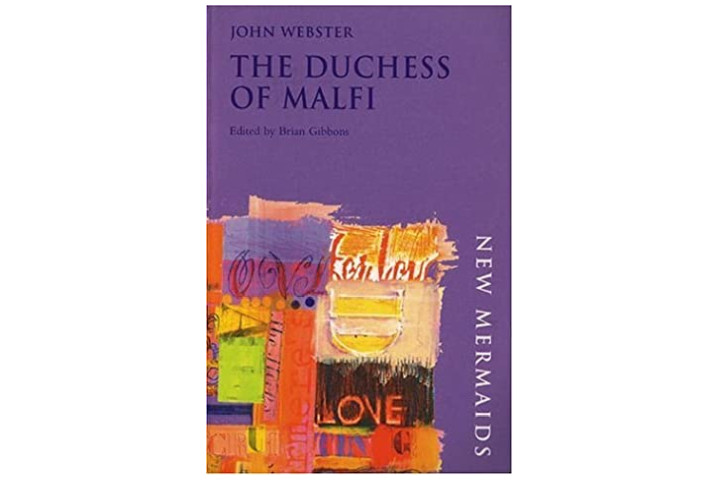
If you like your tragedies bloody and grim, look no further than the Elizabethan playwrights, particularly John Webster. His play The Duchess of Malfi is a gruesome tale of corruption and the perils of being a woman in a world dominated by men. The central characters are Antonio, a man of low birth but high character, and the smart, kindly Duchess, with whom he falls in love and marries in secret. When the Duchess’ brothers discover the marriage, they decide to end it, violently.
Amazon
Volpone by Ben Jonson

Jonson’s most performed play, Volpone (or The Fox), is a brutal satire of greed and lust set in Venice. The plot centers around The Fox, a Venetian gentleman on his deathbed, and the action follows a series of men who attempt to gain his favor to win his fortune.
Action and adventure
The Swiss Family Robinson by Johann David Wyss
First published in 1812, The Swiss Family Robinson tells the tale of a family of Swiss immigrants who are shipwrecked on an island in the East Indies en route to Australia. Spanning over 10 years we follow their life on the island as they survive and thrive, building a treehouse and rescuing a young woman shipwrecked on another part of the island. We’re not sure whether the 1960 Disney movie of the book will be to everyone’s tastes, but it’s certainly fun.
Gulliver’s Travels by Jonathan Swift

Published in 1726, Gulliver’s Travels is a classic satirical travel narrative that digs at many aspects of 18th-century life. This tale appeals not only to adults, but children too, and is said to be the inspiration for George Orwell’s Animal Farm. It tells the story of Gulliver in four parts — at the start of the novel, he’s shipwrecked on the island of Lilliput, where the inhabitants are just six inches tall. Many of us are only familiar with the first part of the novel, which has been the focus for countless movie, TV, and stage adaptations.
Moby Dick by Herman Melville

This awe-inspiring adventure concerns Captain Ahab’s obsession with the great white whale, an obsession so powerful and furious that it consumes him. Melville captures that spirit so well that “white whale” has passed into common usage to describe something you’ve been searching for obsessively. Having served on whaling ships, Melville paints a detailed picture of life at sea in pursuit of whales, largely for oil that was used in lamps, soap, and many other products. This classic book is also packed with references and clever narrative techniques that have proven very influential in the years since its publication in 1851.
The Count of Monte Cristo by Alexandre Dumas

They say revenge is a dish best served cold, and Dumas’ story of the false imprisonment and vengeance of Edmond Dantes is one of the coldest. Wrongfully imprisoned by his best friend and various conspirators, Dantes vows to escape the confines of Château d’If, unearth the treasure hidden on the Isle of Monte Cristo and reclaim what was once his. It’s one of Dumas’ most famous works alongside The Three Musketeers, and for once, we actually enjoy the 2002 movie that goes with it.
Treasure Island by Robert Louis Stevenson

Stevenson’s classic is described as “buccaneers and buried gold,” but that’s not all it is. Yes, it helped set the bar for iconic pirate stereotypes — treasure maps marked with the letter “X,” tropical islands, etc. — but it’s characters like Long John Silver that add a level of complexity and moral depth to an otherwise straightforward children’s tale. Plus, it’s filled with historical allusions and wry, moral commentary that should entertain adults and young audiences alike.
The Call of the Wild by Jack London

It’s hard to argue Call of the Wild isn’t Jack London’s magnum opus. Based on London’s experiences as a prospector in the Klondike, it follows a St. Bernard-Scotch Collie named Buck who is stolen, sold, and forced to survive as a sled dog in the harsh realities of the Arctic. It’s an endearing story, awash with themes of moral good doing and loyalty, and filled with London’s incredibly descriptive accounts of the terrain during the bustling gold rush of the late 1800s.
The Adventures of Tom Sawyer by Mark Twain

Huckleberry Finn gets a lot of hype, but it’s the prequel that helped set the stage for later acts. It carries a somber note amid the air of Twain’s iconic humor and English vernacular, recounting the tale of a young boy growing up on the Mississippi and the various escapades he encountered doing so. Although it often revels in the innocence of childhood and bittersweet nostalgia, it’s still teeming with adult themes and the harsh realities of slavery, starvation, and murder.
Robinson Crusoe by Daniel Defoe

We will probably never know the inspiration for Defoe’s classic castaway tale, but it has certainly inspired an abundance of film adaptations and literary spinoffs. The main character, Robinson Crusoe, becomes stranded on a desert island following an intense storm at sea, equipped with no more than a pipe, a knife, and an inch of tobacco. Needless to say, 24 years pass before he confronts anyone, and when he does, it’s certainly not with open arms.
Horror
The Shunned House by H.P. Lovecraft
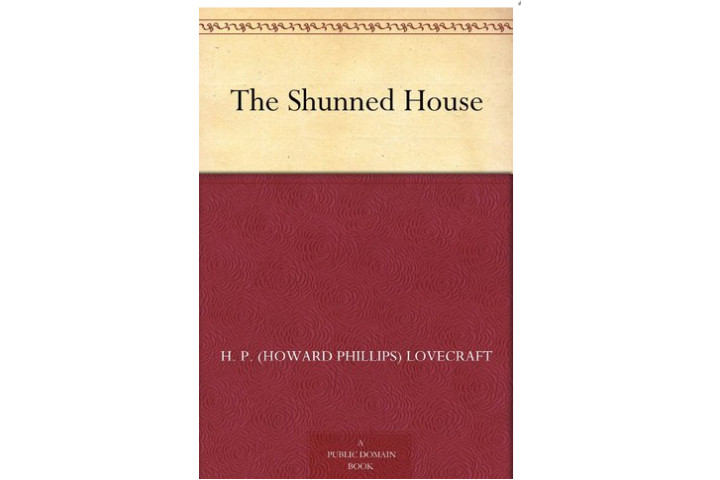
Written in 1924, The Shunned House is considered by many to be one of Lovecraft’s finest early novellas and an important work for anyone interested in his development as a writer. Written while he lived with his wife in Brooklyn, and nostalgic for Rhode Island, it tells the tale of a notorious house that’s an object of fascination for the narrator. He collects lore that his uncle, Dr. Elihu Whipple, has gathered about the house, including details on a number of strange, unexplained deaths and sicknesses. It’s a short read at just 33 pages, but a haunting one and a must for Lovecraft fans.
Amazon
Dracula by Bram Stoker
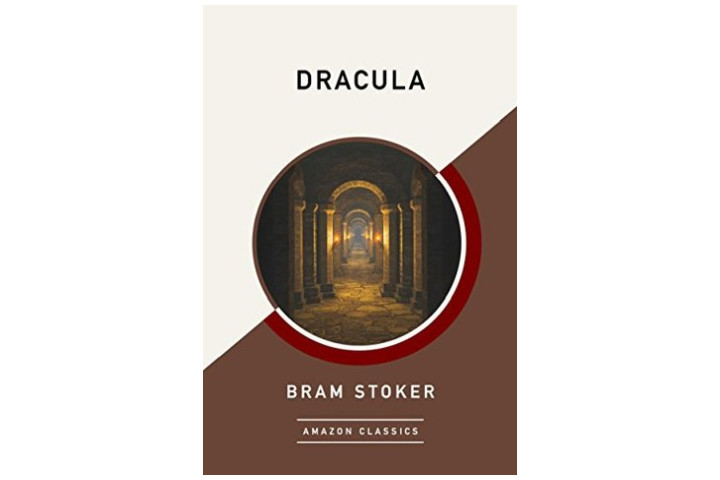
No more Twilight. Stoker’s novel defined the classic vampire, epitomizing Gothic horror and solidifying the character as one of the most iconic horror icons for years to come. The novel is written in an epistolary format as a series of letters and diary entries, among other things, and follows Dracula’s move from Transylvania to England and his confrontations with Professor Van Helsing and Jonathan Harker. You’ve seen the classic horror movie Nosferatu, but Stoker’s vision of this horror book kicked it all off.
Amazon
Dead Scary: The Ghost Who Refused To Leave by Sally Gould

As the title suggests, this is a chilling tale of a boy who encounters a bossy ghost who refuses to leave the house. The story is action-packed in an age-appropriate manner so young kids can enjoy it freely. The plot includes various magical and gripping concepts like spirits, inheritance, sharing, and conflict. The language and the general difficulty level are ideal for middle-grade readers, but younger kids can also enjoy it with some help.
Amazon
Frankenstein by Mary Shelley

Shelley wrote and published Frankenstein by the time she turned 21. That’s a remarkable feat by any standard, especially given the lasting impression the novel had on the world of sci-fi, horror, and countless other genres. It’s centered around scientist Victor Frankenstein and the monster he creates in his laboratory, along with the repercussions of abandoning the grotesque life he created.
The King in Yellow by Robert W. Chambers
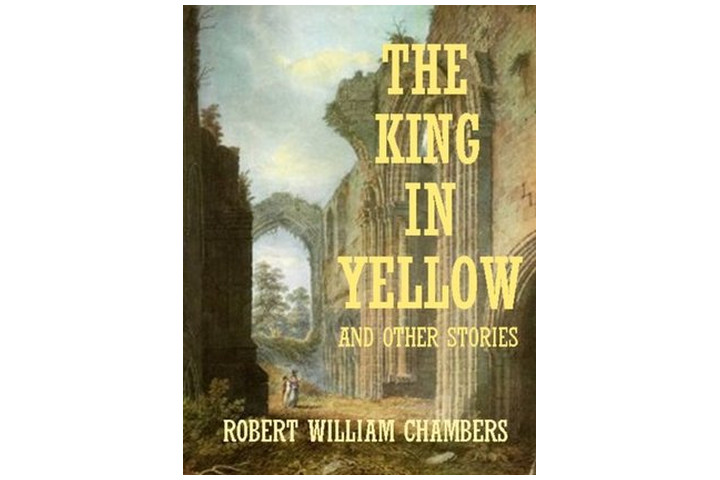
Although only the first four tales in Chamber’s classic novel fall under the “horror” genre, they do so with macabre zest. The King in Yellow refers to a forbidden play that’s interwoven within the short stories from which madness and corruption befall upon its readers. Two of the stories take place in 1920s America, two in Paris, but all four focus on self-indulgent artists with their own shortcomings. Chambers’ seminal work and vague, evocative prose likely spurred H.P. Lovecraft and others.
The Strange Case of Dr. Jekyll and Mr. Hyde by Robert Louis Stevenson

Mad scientists were one of the catapults of the horror genre, so it’s not surprising that Stevenson’s tale about a deranged doctor with split personalities, one good and one evil, made our list. It’s a psychological fantasy of sorts, culled from the modern theories of evolution and class at the time, and burgeoning with examinations of the duality of human nature and insights regarding Victorian-era culture. Still, many argue and provide merit that Dr. Jekyll is more multifaceted than most make him out to be, and to say he has a dual personality is overly simplistic.
The Monk: A Romance by M.G. Lewis

“Scandalous” and “obscene” were two words commonly spurred by Lewis’ lurid story of a villainous priest succumbing to temptation and overly violent impulses. Like numerous Gothic works of the time, it deals with how even the most moral of characters can be corrupted — in this case a priest who has sex with a young girl disguised as a boy and further delves into other sensational acts of sorcery, incest, torture, murder, and deceit.
Amazon
The Great God Pan by Arthur Machen

You’ll be quickly absorbed in this supernatural tale that begins with a strange medical experiment and then takes a turn to delve into pagan Britain and ancient gods. It’s a novella where much is left to the imagination, but it unfolds beautifully and builds the suspense toward an unforgettably creepy climax. This atmospheric horror classic from the 1890s inspired H.P. Lovecraft, among others, and it was widely denounced when it was first published.
Politically-charged
The Jungle by Upton Sinclair

Sinclair’s muckraking socialist novel isn’t exactly uplifting. It’s a brutally realistic depiction of poverty, extreme working conditions, and the prevalent hopelessness that engulfed the working class of the Chicago stockyards. It may focus on Jurgis Rudkus, a Lithuanian immigrant, but it is partly based on Sinclair’s seven-week stint working incognito in the Chicago meatpacking business as part of an investigative piece on behalf of his newspaper. The soul-crushing atrocities and horrendous accounts of the meat industry were so alarming they even spurred federal investigations in 1904.
The Awakening by Kate Chopin

One of the first great novels in the Southern literary canon, The Awakening is complex yet beautiful. The novel focuses on the life of Edna Pontellier and her enlightened but unorthodox views on the socioeconomic status of women in the South. The Awakening is an insightful novel that explores a woman’s changing thoughts about her place in society at the beginning of the 20th century.
The Souls of Black Folk by W.E.B. Du Bois

To put it simply, The Souls of Black Folk is an insightful examination of African-American life at the turn of the 20th century. It was and still is a momentous piece of sociological literature written as part of a semi-autobiographical essay looking at life after the Emancipation Proclamation. Du Bois’ prose is articulate and eloquent — whether addressing neoslavery, traditional music, or what he coins the “double consciousness” of the African American psyche — and serves as both historical analysis and a harrowing piece of social-political commentary that’s difficult to ignore.
The Federalist Papers by Alexander Hamilton, John Jay, and James Madison

We don’t know about you, but portions of The Federalist Papers were mandatory high school reading for us on more than one occasion. The collection consists of 85 brilliant and eye-opening essays that delve into the establishment of various rules of governance and the promotion of the U.S. Constitution. Forged by three of the nation’s Founding Fathers, the papers have been political and historical landmarks ever since their initial release in late 1787 and early 1788. Like the Constitution, however, they’re open to interpretation, mentioned nearly 300 times in varying Supreme Court decisions.
The Prince by Niccolò Machiavelli
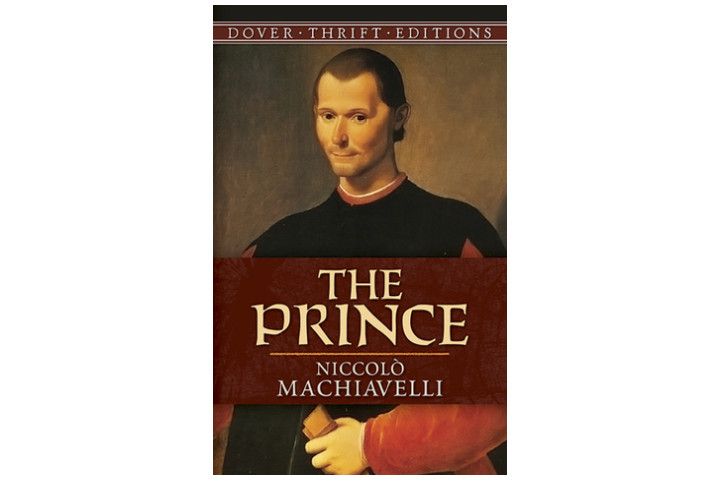
Although The Prince wasn’t officially published until 1532, five years after Machiavelli’s death, a version of the treatise appears to have circulated almost 20 years prior. It’s regarded as one of the first and finest works of political philosophy, deeply rooted in Machiavelli’s fascination and political drive, and is considered a somewhat practical and straightforward guide on how to obtain power and become the ideal ruler. Perhaps the work is a political satire (following it to a tee could essentially undo someone in power), but nonetheless, the term “Machiavellian” didn’t arise from thin air.
A Tale of Two Cities by Charles Dickens
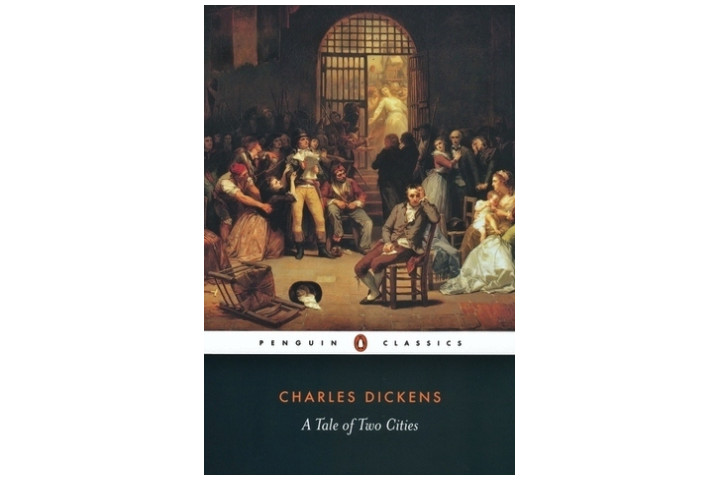
The Reign of Terror during the onset of the French Revolution was a tumultuous and incredibly violent affair (17,000 deaths by guillotine is no laughing matter). Dickens’ classic tale of revolution and brash political upheaval features a love-laced plot, whirling around exiled French aristocrat Charles Darnay, English lawyer Syndey Carton and their indiscriminate fall at the hands of the revolution. Unlike other Dickens novels, it’s mostly devoid of humor, instead centered on providing political context that is both vividly alluring and dishearteningly frightening. Again, we truly doubt it was “the best of times.”
The Communist Manifesto by Karl Marx and Friedrich Engels
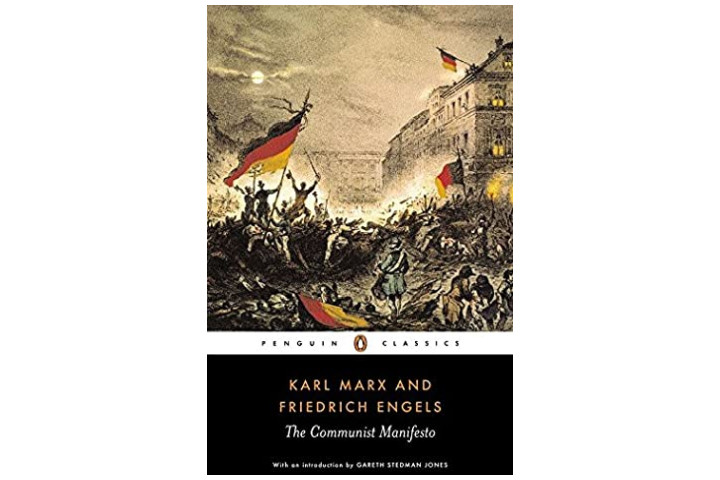
History is littered with political manuscripts and philosophers proposing their theories on class struggle and political dichotomy, but few of them carry the weighty influence of Marx and Friedrich Engels’ in-depth examination and critique of capitalism. It argues with labor comes wealth, which in turn increases the gap between economic classes with one becoming the ruling one at the expense of the others. It lays down the theories and goals behind the movement, outlined rather vividly, and proposes complete revolution as the only way to overhaul an unstable governmental and class structure.
Common Sense by Thomas Paine

Paine’s Common Sense is proof that writing to the people, for the people, is sometimes the way to go. The pamphlet, published anonymously in 1776 during the beginning of the American Revolution, presented an astute argument for the colonies to break free of British rule and establish their own independent republican government. It was written to be tangible and easily digestible, appealing to a mass audience of common people who were often left out of the political dialogue, and helped convince its readership a land that upholds personal freedoms and lacks hereditary kingship isn’t that bad.
The Art of War by Sun Tzu

Have you ever heard of China’s Seven Military Classics? Didn’t think so, but you’ve likely heard of The Art of War. Sun Tzu, a high-ranking military general and strategist, composed the treatise as early as 2nd century B.C., simultaneously solidifying the work as one of the most definitive and influential strategy books of all time. It’s divided into 13 chapters, each outlining a different aspect of warfare, and showcasing Tzu’s emphasis on the perils of war and its embodiment as a necessary evil to be carried out when no other alternatives exist. This is one of the best war novels you’ll find.
Romance
Gone With the Wind by Margaret Mitchell

You can think about it today, or like Margaret Mitchell’s anti-heroine Scarlett O’Hara, you can think about it tomorrow. Frankly, my dear, we don’t give a damn — just don’t skip this classic romance set in the antebellum South with the backdrop of the Civil War and the struggle of the Reconstruction. Gone With The Wind is epic, not only in the sweep of its storyline but also in length. It won the National Book Award for Most Distinguished Novel of 1936 and the Pulitzer Prize for Fiction in 1937 and is gripping from start to finish. And then there’s the movie — but we digress.
Pride and Prejudice by Jane Austen

Austen’s Pride and Prejudice has been making audiences swoon for who knows how long and has led to many adaptations — even one involving zombies. It recounts the tale of Elizabeth Bennett, one of five sisters with a mother hellbent on them marrying rich, and Fitzwilliam Darcy, an arrogantly wealthy English gentleman. What unfolds between them is a beguiling and lively courtship that is as charming as it is witty, filled with Austen’s keen humor and social commentary on marriage and manners, among other things. Plus, it has sold more than 20 million copies worldwide, offering further encouragement for you to download the title.
Roderick Hudson by Henry James

Roderick Hudson was Henry James’ first novel, originally published as a serial in The Atlantic Monthly. The book explores the lives of a sculptor named Roderick Hudson and Rowland Mallet, his single male benefactor. During their travels to Europe, the two experience a number of hardships and failed relationships. An undercurrent of unrequited love appears to exist between the two, leading to an absolutely devastating ending.
Romeo and Juliet by William Shakespeare

You’ve seen the stage adaptation and the modern Leonardo DiCaprio spinoff. Now it’s time to read the real deal. It’s arguably the romance novel, Shakespeare’s quintessential tale of star-crossed lovers plagued by their feuding families, the Montagues and Capulets. It’s written in Shakespeare’s iconic poetic dramatic structure, featuring some of the most memorable characters in literature and a balcony scene that has been hammered into our heads since we were children. It really is beautiful and enthralling, though, with an ending that epitomizes the meaning of tragedy and doomed love.
Phantom of the Opera by Gaston Leroux

It wasn’t Leroux’s initial edition of The Phantom of the Opera that garnered all the praise and fanfare, but the 1925 film depiction and Andrew Lloyd Webber’s hit musical. However, the original tale about the Phantom living below the opera houses all the core elements of the latter adaptations: a menacing figure presiding over the opera, a talented chorus girl, and an enchanting childhood sweetheart that comes between them. It’s a Gothic love triangle fit for all time, aloft with dark, theatrical color and Leroux’s gift for creating rich characters with whom you sympathize, fall in love, and despise.
Wuthering Heights by Emily Brontë
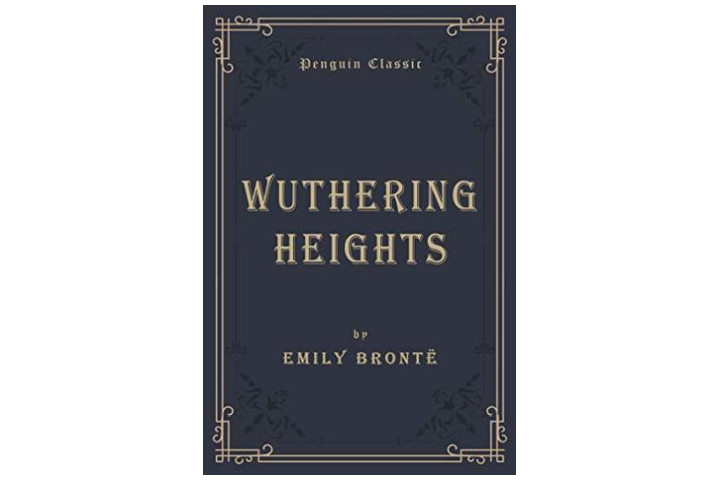
Just because one Brontë is not enough. Wuthering Heights is set in the stormy moors of England during the early 1800s and is centered on a love that is disturbingly fierce and vividly dark. It’s told through a series of flashbacks recorded in a diary, chronicling Catherine Earnshaw and Heathcliff’s inseparable childhood and the ensuing turbulent, and vengeful, events that violently whittle away at a love doomed from the beginning. Despite being her first and only novel, Brontë’s prose is fluid and poetic, draped in lucid descriptions of the moorland and the characters who call it home.
To Catch a Bad Guy by Marie Astor

Everyone knows dating in the workplace can cause … complications. Astor’s novel takes that into consideration and then some, spinning a tale about an undercover crime investigator who finds himself infatuated with an employee of the prominent New York investment firm he is looking to bust. It’s the first book in the Janet Maple Series, patchy and grammatically flawed, but it has enough clever moments and spry, romantic wit to make it well worth the nonexistent price.
The Scarlet Letter by Nathaniel Hawthorne

Let’s be honest, adultery today doesn’t quite resonate with the same woeful shame it does in the harsh, Protestant community of Hawthorne’s memorizing narrative of legalism and sin. It spotlights a young, intelligent and thoughtful woman named Hester Prynne, who is publicly ostracized and forced to wear a piece of fabric in the shape of the letter “A” after having an illegitimate birth resulting from an affair with a minister while her husband is overseas. It’s dramatic and inspiring, rooted in a character that undergoes ample scorn only to retain her dignity and beauty in the end.
Anna Karenina by Leo Tolstoy

Russian author Leo Tolstoy knows all too well that we cannot help who we love. In his second acclaimed novel, the beautiful and passionate Anna Karenina leaves her husband when she falls head over heels for a wealthy army officer named Count Vronsky. Insecurities arise, with Karenina’s paranoid and jealous fits — among other things — tearing the marriage apart, and heartbreak ensues. The story regarding Konstantin Levin also contrasts alongside Karenina’s — heart-wrenching in a different way, but it’s teeming with many of the same undercurrents of societal values and carnal desire.
Philosophy and science
The Origin of Species by Charles Darwin

Darwin’s The Origin of Species is one of the few pieces of scientific literature that is actually readable, not to mention one of the most influential. It essentially built the foundation on which the concept of evolutionary biology is based, providing evidence from his voyage on the HMS Beagle, and expanded on the theories he and Alfred Russel Wallace helped conceive. The initial text was highly controversial, both in the scientific and the religious fields, but it demanded attention given Darwin’s standing in the scientific community. It’s a warranted read, no matter your beliefs on the origin of the species.
The Seven Valleys and the Four Valleys by Bahá’u’lláh

Technically two distinct books written by the founder of the Bahá’í Faith, the novels serve as an examination of the soul through the various spiritual stages of life (love, knowledge, unity, true poverty, etc.) upon the “Right Path.” The mystically charged text, written around the time Bahá’u’lláh quit his job and began endlessly wandering Iraqi Kurdistan, features highly poetic prose that has often been misconstrued when translated from its native Persian. Still, it’s intellectually stimulating and presents intriguing ruminations on life you may not have thought to ponder.
Walden by Henry David Thoreau
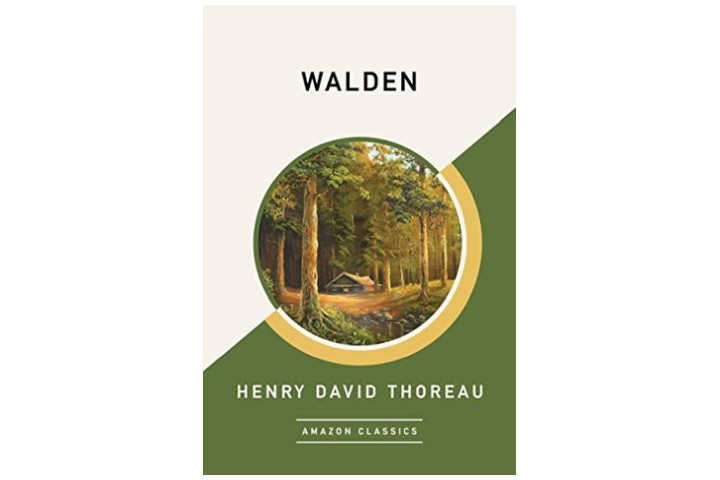
The exact reasons for Thoreau’s two-year stay in a cabin near a small pond in Massachusetts have always been shrouded in mystery. Whatever the reasoning, the American transcendentalist produced a remarkable account of his experiences, condensed into a single calendar year swarming with insights and contemplative revelations emphasizing solitude, self-reliance, and mankind’s affinity for the natural world. Thoreau is a brilliant writer who seemingly has little trouble combining autobiographic details with an apt and poignant social critique of Western civilization.
The Trial by Franz Kafka

It’s been estimated that Kafka burned nearly 90 percent of his work during his lifetime. Nonetheless, The Trial was published the year following his death, though never completed. The story revolves around Joseph K, a respectable chief financial officer at an undisclosed bank, and his arrest and subsequent prosecution for a crime that is never revealed to him or the reader. It’s a frighteningly dark, satirical novel that’s borderline surreal and fraught with unclear meaning.
The Republic of Plato by Plato

The ideal state is far harder to implement than it is to envision. Plato’s Socratic dialogue, written circa 380 B.C., examines a spectrum of assorted topics ranging from society and morality to education and philosophy. It also highlights the nature of reality, the just and unjust man, and Plato’s theory of Forms. It, along with several others, help develop political theory and add further fuel to a period already swimming with philosophical debates. There’s no doubt that it will make you think, but comprehending it in full may be a different story.
Siddhartha by Hermann Hesse

Countless books deal with self-discovery and our spiritual journey through life, but Hesse’s ninth novel is one of the most celebrated and well-known in all of literature. The novel begins with the main protagonist, Siddhartha, voluntarily leaving his prosperous Brahman life for one more contemplative and full of meaning. He relinquishes his processions and conceives a son, but later relapses into a life of materialism until he finds salvation and enlightenment in the presence of a river. The novel’s simple, lyrical style renders it both praiseworthy and understandable, with heavy leanings on the concept of Om.
The Picture of Dorian Gray by Oscar Wilde

Dorian Gray is a chic, young man of wealth and beauty who, under the influence of a nobleman, decides to sell his soul and embark on an immoral path to retain his fleeting youth. In doing so, he hopes to outlast a portrait painted of him by artist Basil Hallward, but soon finds the painting a mere reflection of his debauched acts and hedonistic sins. Wilde was a major proponent of the aestheticism movement, emphasizing the beauty of art over its educational and societal value, and his novel is evidence of that. It was scandalous for the time, resulting in strict censorship, but remained distinctly Wilde nonetheless.
Einstein’s Theories of Relativity and Gravitation by James Malcolm Bird

Einstein was a brilliant physicist — that much is indisputable. While working at the Patent Office in Bern, Switzerland, he devised what would become the bedrock of modern physics and some of the most influential theories ever created. The novel focuses on and details how the universe might function, including the concept of curved space-time, and disassembles Newton’s theory of time and space. Despite what you might think, it’s relatively (pun not intended) boiled down for amateur and professional scientific audiences alike.
Concerning Human Understanding by John Locke

Sectioned into four books, Locke’s foray into the realm of human knowledge and basic understanding proposes the mind as a blank slate that becomes gradually more complex and intricate as we grow and expose ourselves to new experiences. The essay represents one of the principal sources of empiricism in philosophy, the idea that our knowledge is primarily derived from sensory experiences we encounter, and thus counters the theory that knowledge and traditions are innate. It’s a theory that holds a great deal of water and makes for an insightful read.
Amazon
Humor
Emma by Jane Austen

Said to be the funniest of Austen’s novels, Emma is set in the fictional town of Highbury in the early 19th century. The story centers on a young woman, Emma Woodhouse, who seems to have somewhat misplaced confidence in her matchmaking abilities. Many romantic misadventures ensue, and the humor never wanes throughout.
My Man Jeeves by P.G. Wodehouse
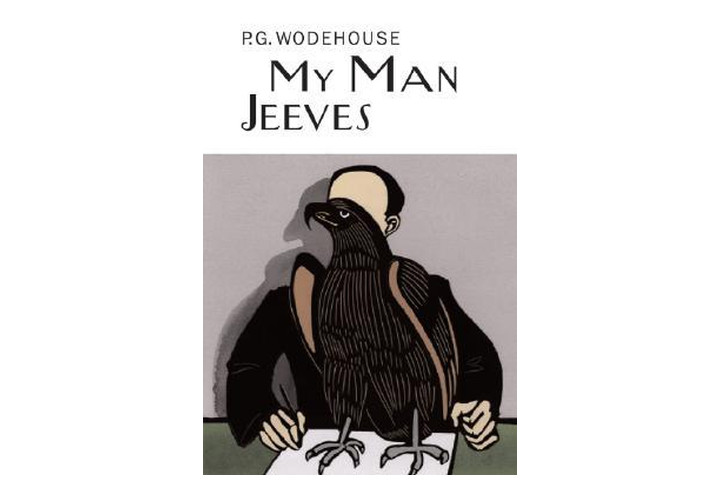
The best part of short stories is the brevity, whether good or bad. My Man Jeeves is a comical collection of eight short stories originally published in various U.K. magazines before its initial release as a book. Half of the stories are centered on silly escapades of the good-hearted aristocrat Bertie Wooster and his loveable valet Jeeves, while others concern Reggie Pepper (a similar character to Wooster). The formula for the stories is essentially the same — Jeeves always manages to save Wooster’s moronic neck — but the appeal lies in Wodehouse’s dry, British humor, and intellectual wit.
Roughing It by Mark Twain

Twain was fabled for embedding autobiographical accounts of his wanderlust years within his fictional works. Published in 1872, Roughing It chronicles Twain’s raucous journey throughout the American West with his brother, intertwining realistic stories of his travels with the developing rough-hewn, ironic humor that would later become synonymous with his name and most beloved works. It delves into his stints as a gold miner, a reporter, and a lecturer as his stagecoach travels through Nevada and his side trip to Hawaii. Plus, it’s 10 times shorter than the Autobiography of Mark Twain: Volume 1.
The Importance of Being Earnest by Oscar Wilde

Sure, Wilde penned his one and only novel in 1890, but it was his later works that helped him become the acclaimed playwright we recognize him as today. The Importance of Being Earnest is the embodiment of satire, a humorous examination of Victorian-era manners and marriage laced with rapid-fire wit and an eccentric cast of epigrams. It revolves around two refined gentlemen who adopt fake personas with the goal of dazzling their respected love interest. Unlike his novel, the play’s debut marked a high point in Wilde’s career and was met with a sea of critical acclaim and universal praise.
The Taming of the Shrew by William Shakespeare

If there ever was a Shakespeare play that relied on language to carry the plot more so than any other theme, it would be The Taming of the Shrew. It’s the tale of Lucentio and Petruchio, two young men seeking to wed two wealthy sisters they encounter in the Italian city of Padua. However, trouble arises when Lucientio discovers that he can not marry the women he loves unless her ill-tempered and verbally aggressive older sister is wed — that’s where Petruchio comes into play. Although it’s been seen as misogynistic and patriarchal, it’s also one of Shakespeare’s most boisterous and comical plays, steeped with sharp-tongued banter and rhetoric.
The Life and Opinions of Tristram Shandy, Gentleman by Laurence Sterne

If Laurence Sterne wasn’t well-read, he certainly makes us believe he is. His novel, a humorously rich satire regarding Tristram Shandy’s life story, is aloft with references to philosophical theories and allusions reminiscent of 17th-century metaphysical poets. The humor is bawdy and brash, whether focusing on Tristram Shandy’s rational father or his military-obsessed uncle, but frequently finds itself intertwined in bouts of digression regarding sex, insults, and philosophical dilemmas. It’s entertaining, amusing, and showcases a narrative just as inventive today as it was when it was released in the 1760s.
Don Quixote by Miguel de Cervantes Saavedra

Chivalry is arguably on its way out, but it would likely never cease if the country gentlemen Don Quixote and his cunning squire Sancho Panza had anything to do with it. Saavedra’s classic canonical novel remains one of the most influential of the Spanish Golden Age and follows a retired country gentleman who takes up his lance on a dubious — and undeniably lengthy — quest to subdue the evils of the world. It’s playful, loaded with irony and delusion, and has been considered one of the first modern novels for more than 400 years.
Poetry
The Raven (Illustrated) by Edgar Allan Poe

The Raven tells a haunting tale of love, loss, and loneliness in a dialog between a man and a monosyllabic raven whose only word is, “Nevermore.” This poem, first published in popular magazines, shot its author to considerable fame, if not fortune. The e-book also includes line drawing illustrations.
The Waste Land by T.S. Eliot

T.S. Eliot’s The Waste Land is the defining poem of modernism, and for good reason. Broken into five sections and dense with allusions, homages, and various languages, the poem conveys the feelings of a world shattered by World War I and the cultural upheavals of the 20th century. It also contains some of Eliot’s most striking lines, including the opening “April is the cruelest month …”
The Complete Works of Percy Bysshe Shelley by Percy Bysshe Shelley

Percy Shelley was one of the great figures in the Romantic movement, running in the same circles as figures such as Lord Byron and John Keats, and his poetry stands as some of the most iconic of the era, swelling with gorgeous imagery and masterful arrangements. This collection includes some of his most famous works, like the sonnet Ozymandias, as well as longer pieces like Prometheus Unbound.
Lyrical Ballads by Samuel Taylor Coleridge and William Wordsworth

Long before John Lennon and Paul McCartney, William Wordsworth and Samuel Taylor Coleridge were the great lyrical duo of the age, publishing Lyrical Ballads and kicking off the Romantic movement. These poems, written in vernacular English, offer a glimpse into the lives of country folk and the beauty of nature.
Paradise Lost by John Milton

Written in the wake of the English Civil War and the Restoration of the monarchy, John Milton’s Paradise Lost is an epic poem that chronicles the aftermath following Satan’s rebellion against God, and his later plan to corrupt Adam and Eve. It is a work of staggering power (and length) written in blank verse — and the magnum opus of one of England’s greatest poets.
Beowulf

One of the foundational texts of English literature, Beowulf follows the titular hero, a Geat who comes to the aid of the Danish king Hrothgar, whose land is besieged by the monster Grendel. Beowulf is a majestic work, one sure to please any reader who enjoys tales of heroes rending limbs from monsters.
Sir Gawain and the Green Knight by Richard Morris

There are plenty of stories that make up Arthurian legend, but one of the most famous is the tale of Sir Gawain and the Green Knight. The poem follows Gawain, one of Arthur’s knights, as he embarks on a journey to fulfill his side of a lost bet. Along the way, he must withstand the temptation to break his vows and the chivalric code.
The Iliad by Homer
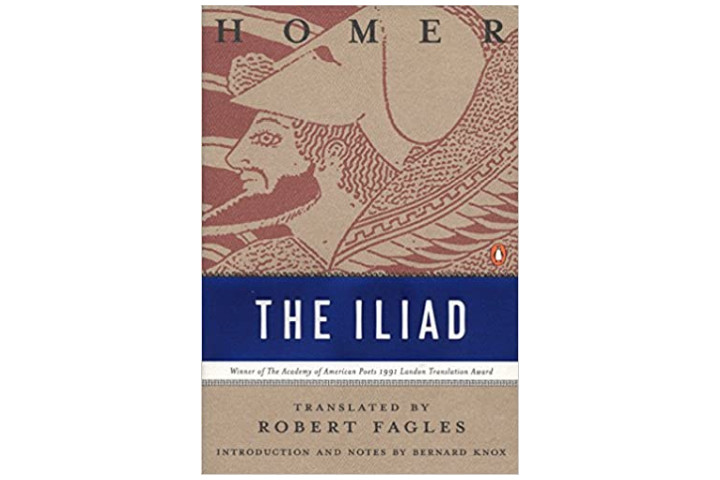
Set near the end of the Trojan War, The Iliad is the story of the rage of Achilles, the greatest of the Greek heroes. The story begins with Achilles’ dispute with the petty king Agamemnon and builds up to his fateful duel with the Trojan prince Hector. Like all Greek myths, it is a story of complicated, oft-flawed people, and the disastrous consequences of their actions. This is one of the best poetry books of all time.
Shakespeare’s Sonnets by William Shakespeare

Every high school curriculum over the years assigns grumpy English students with the terrifying, borderline Herculean feat of creating a sonnet. Not all of us can be as adept as Shakespeare, who wrote 154 breathtaking sonnets that are some of the most beautiful poems on Earth.
Shakespeare’s sonnets cover various subjects, too, often toying with and subverting common topics such as love, gender, and the artist’s role.
The Odyssey by Homer

Even 2,700 years later, we still can’t help but recount one of the most legendary stories in historical literature about Odysseus. The epic poem, a follow-up to the Iliad, traces Odysseus’s 10-year return voyage to Ithaca following the Trojan War.
This particular storyline is designed for a broad audience and is filled with tantalizing rendezvous with sirens, intense battles with cyclops, and grievous losses of suitors. The writing style is dactylic hexameter paired with a non-linear plot that includes intriguing Greek mythology and folklore.
Leaves of Grass by Walt Whitman

The influential and undoubtedly erotic work of Walt Whitman doesn’t require a drawn-out introduction. Although only 12 poems are included in the first edition of the collection, it took Whitman the majority of his life to write. He finally finished the same year he passed away.
Consecutive editions stockpiled a whopping 400 poems, organized into a variety of volumes and each offering content applicable to specific times in Whitman’s life. They span a wide range of topics, including but not limited to American romanticism, the machinery age, and nature. But those are only a few of many. Song of Myself and Out of the Cradle Endlessly Rocking are two of Whitman’s most famous works included within this timeless compilation.
Frequently asked questions (FAQs)
Which e-book format is suitable for Kindle?
Kindle apps and devices work with Amazon’s proprietary e-book formats including AZW and AZW3 (also called KF8). Books designed specifically for Kindle are often available in these formats. Other Kindle-friendly e-book formats include MOBI (based on Mobipocket), and PDF. Many e-books are available in an EPUB format but Kindle can’t read them. However, you can easily convert EPUB files to MOBI or PDF through free online converters. The PDF format will allow you to access the book on various devices (without a Kindle) since most devices can read a PDF file.
What are the best websites for downloading free Kindle books?
Project Gutenberg: It’s a large repository of free public domain e-books. You can find almost any classics and even a few select newer books. You can’t download the books directly, but the upside is you get access to 60,000+ e-books in almost all genres for free.
Amazon’s Free Kindle E-books
Book Lending: If you would rather borrow books than download them permanently, Book Lending may be an excellent option for you. It is a free library-like service where you can lend and borrow from a wide selection of titles. Books are only available for 14 days after you borrow, so it is a great motivator for procrastinators.
Is downloading free e-books legal?
Whether downloading free e-books is legal depends on where you are downloading them from. Using public domain content from sites like Project Gutenberg is legal. Websites like Book Lending, BookBub, and Internet Archive offer copyright-free books that you can download legally. The problem arises when you access or download e-books from shady sites. If a relatively unknown website is offering the latest book that just hit the shelves for free, it may be a scam or a virus bait. Stick to official sources like Amazon’s free e-book library and the aforementioned websites so you can enjoy your e-books without getting into trouble.
